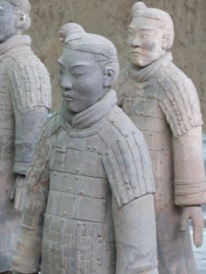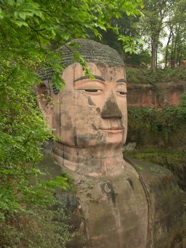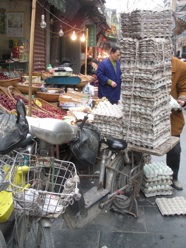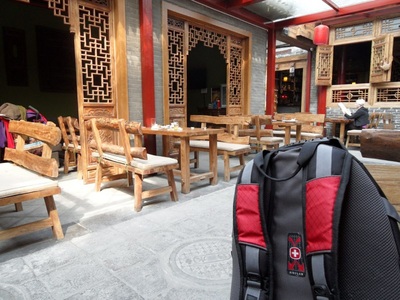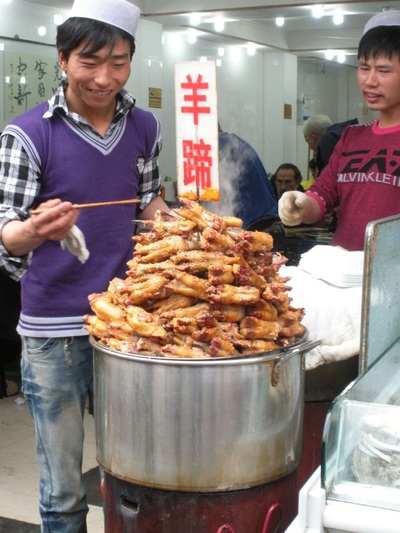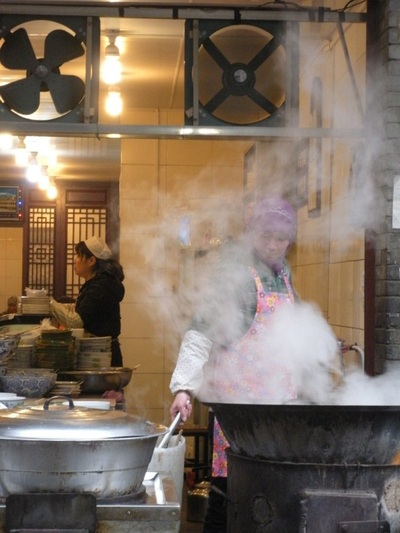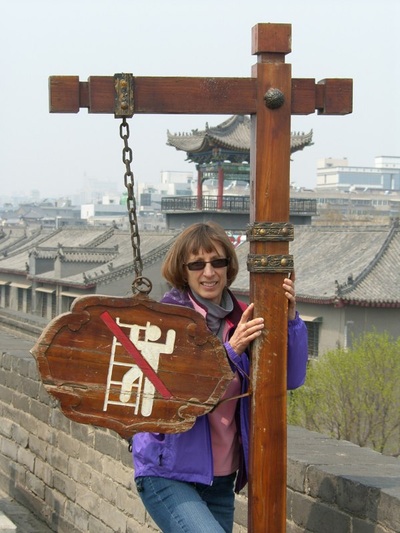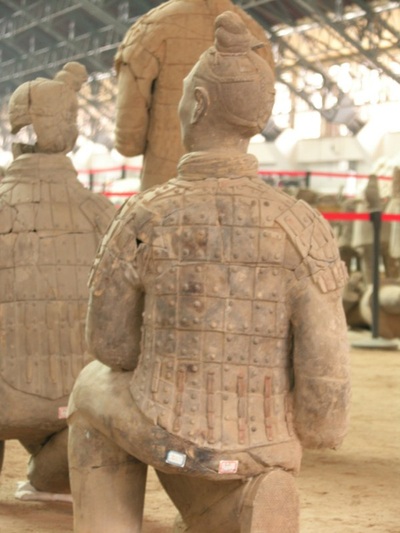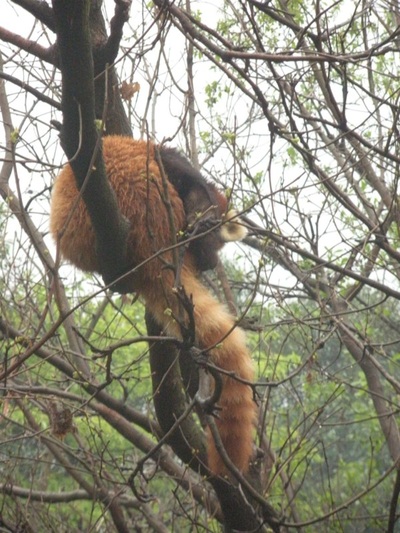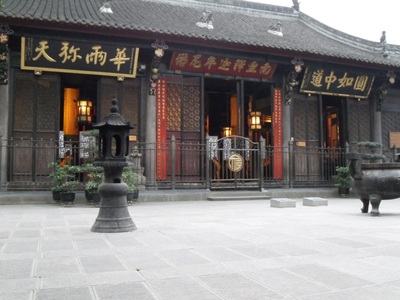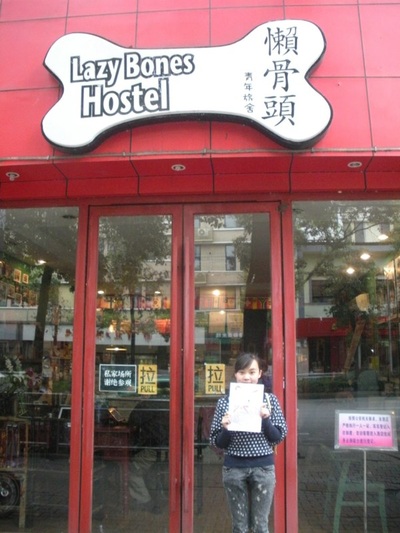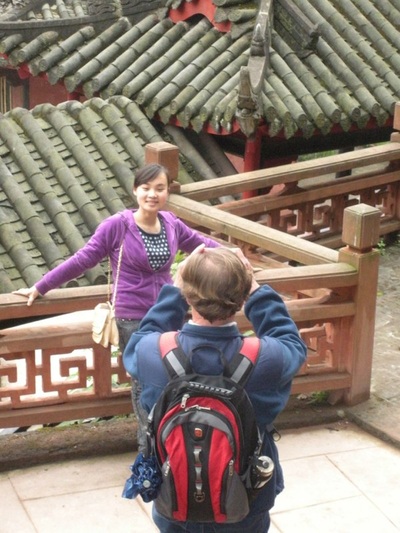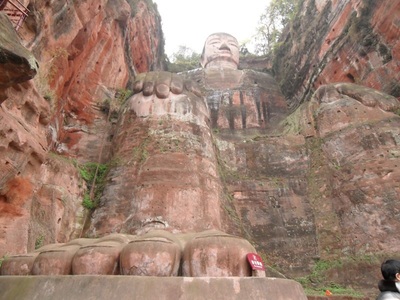- Home
- 2023
- 2019-2022
-
2017-2018
-
2014-2016
-
Azerbaijan
>
- Nakhchivan May 2016
- Quba Apr/May 2016
- Museums Feb 2016
- Friends & Gatherings Baku
- House and Plants
- Around Baku
- Qax June 2015
- Billy's Decade Party
- Ganja & Goygol Oct 2015
- Lahij Feb 2015
- Yanar Dag/Ateshgah
- Petroglyphs/Mud Volcanoes
- Oguz, Xal Xal: Oct 2014
- Absheron Park: Sep 2014
- First 2 Wks Baku: Aug 2014
- Turkey >
- USA >
-
Azerbaijan
>
-
2011-2014
- 2008-2011
- 2006-2008
-
2003-2006
- Cars & Motorbikes
- Mom & Dad
- Seattle & Bellingham
- New Page
XIAN, CHENGDU & LESHAN
|
It’s our last chance to tour in China while still living here. There are lots of suggestions on where to go and what to do, but somehow it comes down to seeing the Terra-cotta Warriors in Xian, the Panda Reserve in Chengdu, and the Giant Buddha of Leshan. Rui Rui and Richard add to our enjoyment and this dynamic foursome enjoyed our hostels, hot pots, and happy times.
An overnight train from Nanjing to Xian arrives early Monday monring. The Xiangzamen Youth Hostel is a great place - quaint decor, toasty warm eating area and rooms, OK food, clean, friendly, and right next to the city wall, and complete with sleeping cats. XIAN CITY WALL: Leaving the hostel it’s a 5 minute walk to the city wall. Xian has the most complete city wall (intact and circular end to end) that has survived in China as, as well as being one of the largest ancient military defensive systems in the world. The wall stands 40 feet tall, 40-46 feet wide at the top and 50-60 feet thick at the bottom. It covers 8.5 miles in length with a deep moat surrounding it. Every 400 feet there is a rampart which extends out from the main wall. In each of these 98 ramparts a sentry was housed in a building to protect soldiers. The distance between every two ramparts is just within the range of an arrow shot. Initially the wall was built with layers of dirt, with the base layer including lime and glutinous rice extract. The wall has been restored 3 times; in 1569 it was rebuilt with bricks, in 1781 the wall and gate towers were refitted and in 1983 the wall was restored again. MUSLIM MARKET: Not far from a very busy intersection is the center of the city is a photographer’s paradise. The Muslim Market is full of color, action, and diversity. We wander through the streets and take it all in. From kettles piled high with pigs feet to fried quail eggs, it’s all there to experience. XIAN WARRIORS In 1974 some local farmers were digging a well and came across some pottery fragments and ancient bronze weapons. As archeologists started excavating the site, the immensity of the findings became apparent. It seems amazing that this marvelous creation had been buried for 2.200 years with no mention throughout modern history. Emperor Qin is credited with uniting China under one rule and abolishing the feudal system. 2 million people, or 10 percent of the population were used to build a palace and the emperor’s tomb. In doing so, he damaged the economic development of the empire. Qin was obsessed with death the strove to find an “elixir of life” but in doing so expended great amounts of resources in this unsuccessful venture. He believed that life after death was a continuation of his current life and wanted to prepare himself well. There are 3 pits which have started excavation. Only a small percentage of what they speculate is there has been unearthed. The warriors immediately lose their vibrant colors when they are unearthed, so much of the digging is waiting until a better technique for preserving the color is found. It’s a gigantic jigsaw puzzle to piece together these broken warriors. Which is the larger feat: their original creation or their restoration? We meet up with Rui Rui in Chengdu and go to the Lazy Bones Hostel - complete with the obligatory sleeping cats. We have our first HOT meal of boiling tofu, walk the town, and listen to the Buddhist monks chanting at dusk. PANDA RESERVE: The next day we bus out to the Panda Reserve and Research Center. This is the world’s largest giant and red panda reserve. (We had never heard of a red panda before this.) The main purpose is to educate visitors as well as to breed, raise, and protect the endangered giant panda. We are up early as our guides assure us that it is best to get there at opening to see the pandas at their most active time. It’s a drizzly day, but that seems to work in our favor as there are very few people at the reserve. The reserve is 92 acres of lush, green panda heaven and pandas are everywhere! Big ones, little ones, eating, sitting, sleeping -and WOW - panda sleeping in trees! Long into the tour, on one of the many beautiful pathways we look around and ask each other “Where’s Richard?” No one seems to know, so one of the guides goes searching to no avail. But, we figure he’ll turn up sometime and about 45 minutes later we’re right - he took a wrong turn and his comment was “What a great place to get lost in!” HOT POT: Now, we’ve eaten hot pot before. This is a Chinese dish where they bring a huge pot of boiling seasoned liquid to the table which has a built-in burner at the table. Part of the pot is usually not spicy while another part is spicy. They then serve all kinds of raw vegies and meat - you take a piece of vegie or meat and hold it in the liquid to cook it and then eat it - yummy! Well, this hot pot topped anything we have ever eaten as far as spicy - YIKES! this was by far the HOTTEST food we have every eaten! LESHAN BUDDHA: It’s on to Leshan to visit the Giant Buddha. This is the largest carved stone Buddha. It was built in the Tang Dynasty (818-907AD) and sits at the confluence of 3 rivers. The Buddha was constructed in the hopes that it would calm the turbulent waters that plagued the shipping vessels traveling down river. Interestingly, by the end of the project, so much stone was removed from the cliff and deposited in the river that the currents were altered making the river much calmer! The Buddha has been ravaged by the environmental changes in the air quality. Even after being fully restored 10 years ago, it is deteriorating. It’s been a week of travel, laughter, good friends, amazing sites, exotic food and creations of lasting memories. Thanks so much to Rui Rui and Richard for making our journey all that much richer and memorable. |

